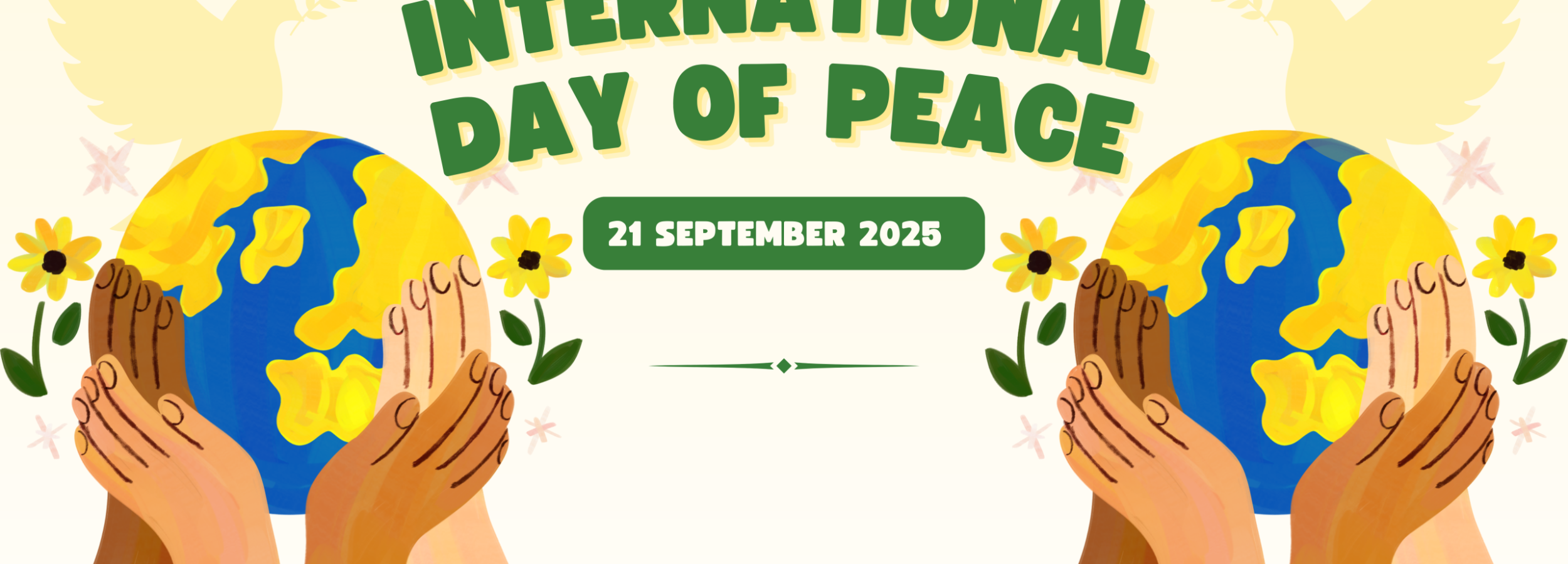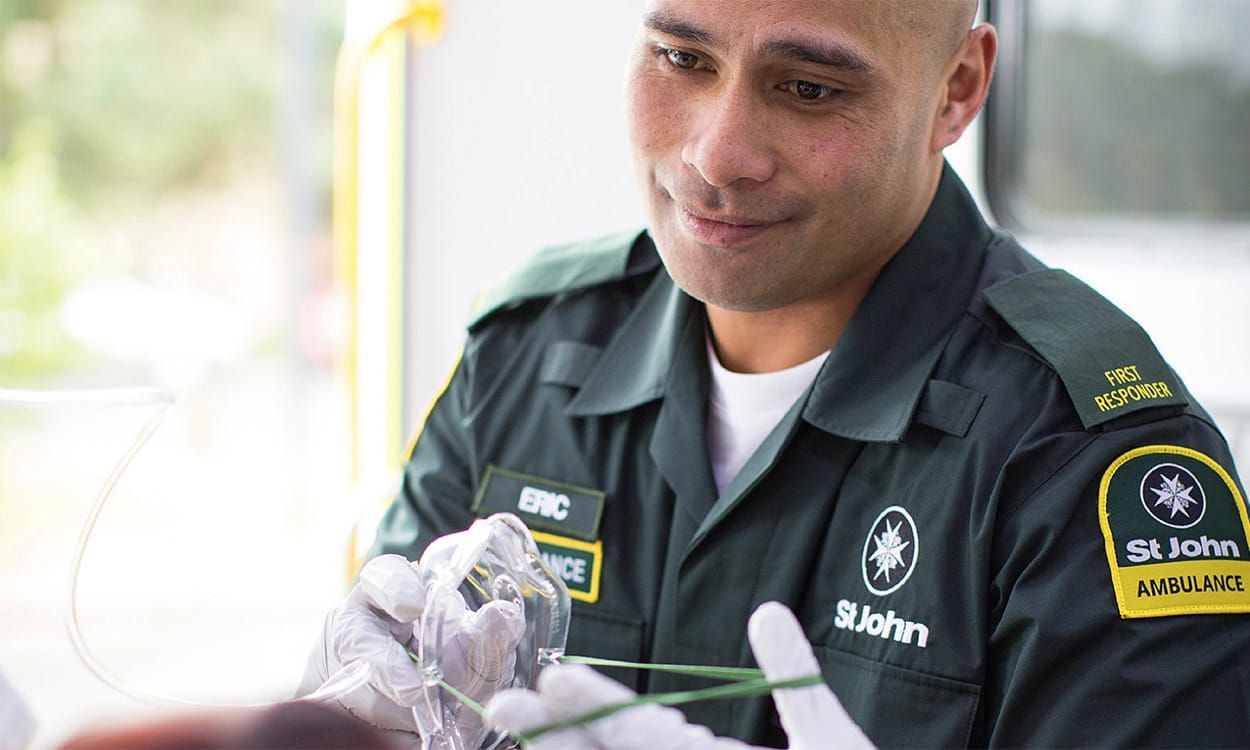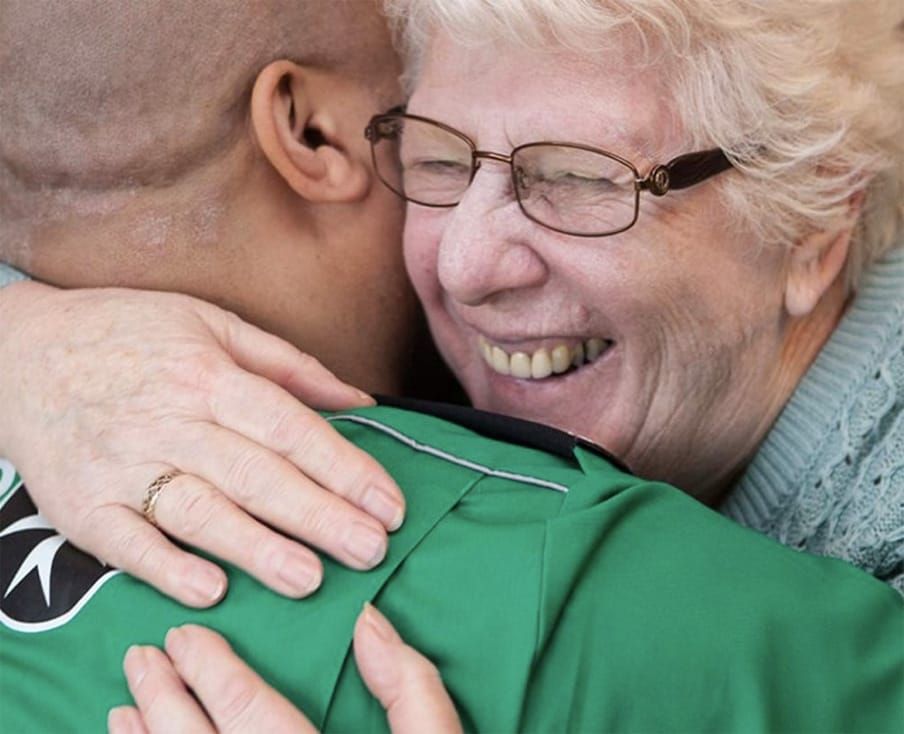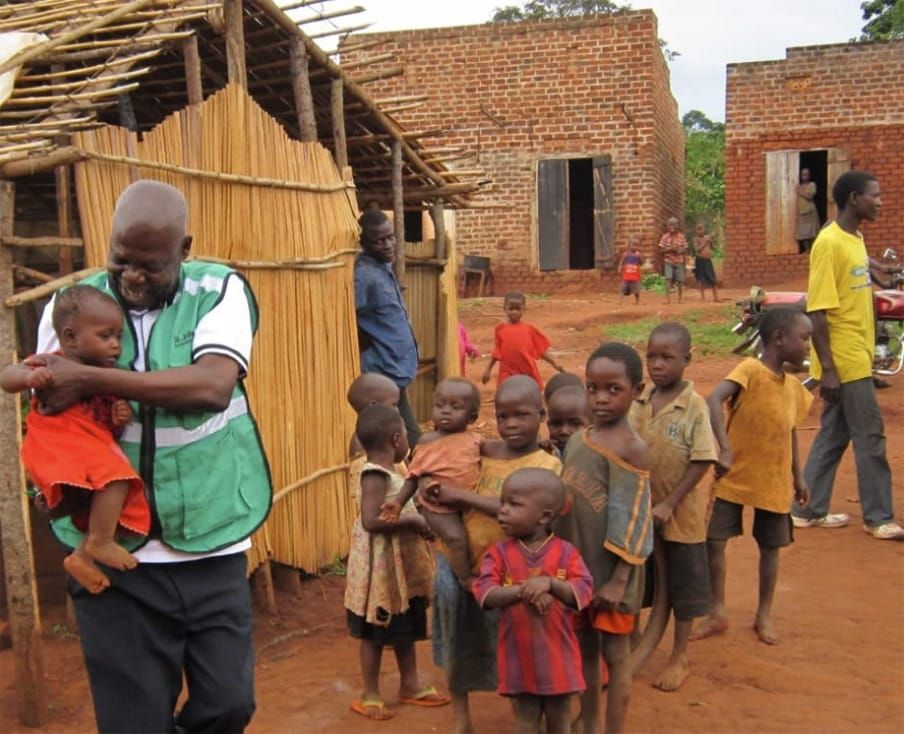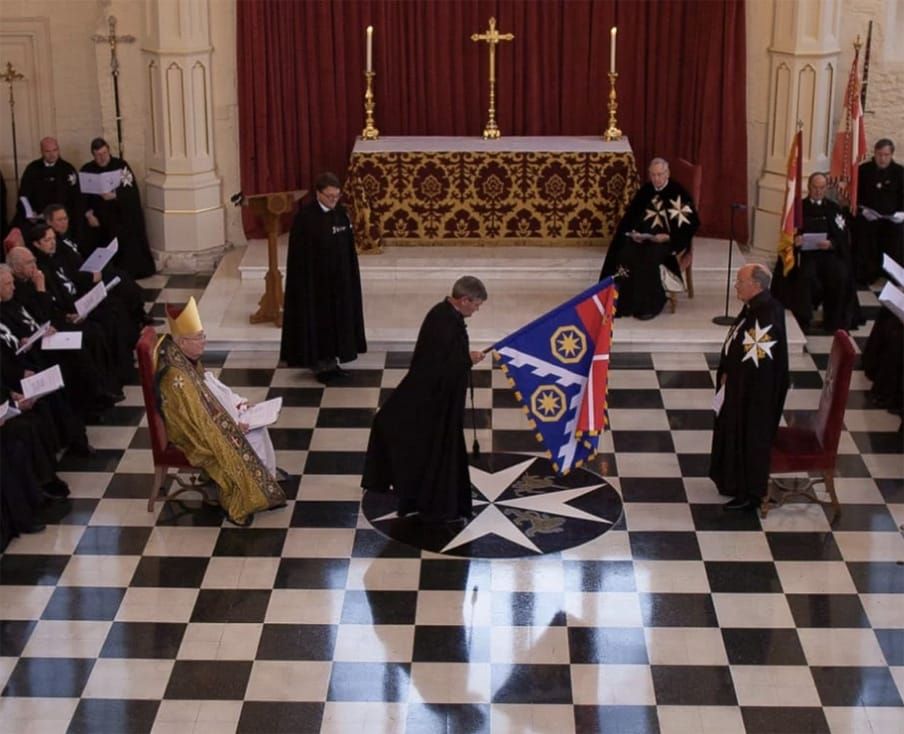On September 21st, the International Day of Peace calls us to pause and reflect. True peace is more than the end of war, it is compassion, justice, and healing lived out in our shared humanity.
In this reflection, Archbishop Emeritus Sir David Moxon KNZM, KStJ, MMCM, Prelate of the Order of St John, draws on the vision of Gerard of Jerusalem and the parable of the Good Samaritan to remind us that lasting peace is always rooted in acts of love that cross the deepest divides.
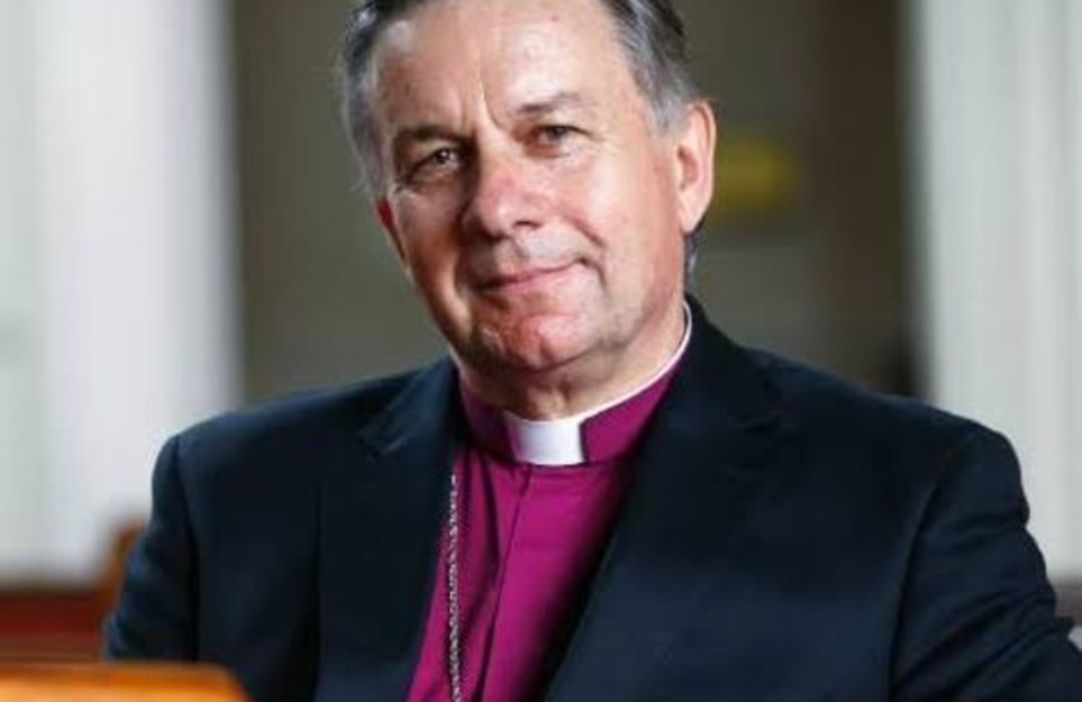
What makes for deep peace, for true peace, for lasting peace?
The founder of the Order of Saint John, Gerard of Jerusalem (1040–1120), was motivated to create a hospice for anyone and everyone in Jerusalem by a vision of compassion, healing, and hope in a time of war. These are vital ingredients for genuine and lasting peace, accompanied by the quest for justice in their name. Gerard pursued this mission amid deep political conflict, racial prejudice, and military tension. His was therefore paradoxically a time of love, hate, and prejudice. Although his story is old, the love, the hate, and the prejudice are ever new. We need his vision and solidarity in “team human” even more today if deep, true, and lasting peace is to be sought and lived.
What motivated Gerard more than anything else was a story told by Jesus of Nazareth a thousand years before: the well-known parable of the Good Samaritan in the Gospel according to St. Luke 10:25–29. But how well do we know it? How deeply does it reach into our conscience now? What implications does it have for healing and peace in our current fraught international context of war and ethnic enmity?
A deep dive into the parable reveals the transformative dynamic we need now more than ever as we think about international peace. Kenneth Bailey, the highly respected Christian biblical scholar who lived in Beirut and other parts of the Middle East for many years, has written compellingly about the parable of the Good Samaritan. Working with both Arab and Jewish Christians, Bailey reflects in a way that reveals this parable’s power to evoke compassion, healing, and hope in our time—a time when peace so often seems elusive, even impossible. How can apparently mutually exclusive claims be reconciled over land, power, and human rights?
Firstly, the story is set in a context of enmity and long-standing prejudice, much like ours. Peace was fragile and often collapsed. The Samaritan and Jewish communities had developed many reasons for deep conflict, which occasionally erupted into violence. In the narrative, a Jewish man is traveling down the road from Jerusalem to Jericho, a winding, hilly, lonely, and dangerous road, when he is attacked by robbers. He is beaten, robbed, and stripped, left half dead. This means he cannot cry out, being unconscious, and he cannot be identified by his clothing as to what race or caste he belongs. He is cast into a no-man’s land where he will probably die. It is also dangerous to assist him, since the robbers may still be lurking nearby.
Bailey notes that the first two people who come across him pass by on the other side. This is likely because they are temple officials who are not permitted to defile themselves by touching what might be a dead person, unless they purify themselves back at the temple—miles away, back up the road they are already halfway down. They give him a wide berth not because they are bad or unfeeling, but because the temple system and its hierarchy of laws and purity codes dictate their conduct. We are often limited by what we think is respectable or by unexamined norms. This keeps us at a distance from each other and from the truth that we are all made of one blood.
Remarkably, a Samaritan—the enemy—comes after them and is moved to his core by the badly wounded man’s plight. He has no idea who this man is, but he feels an almost overwhelming convulsion of compassion toward another human being in crisis. He goes to the man and pours on oil and wine as a first response. Bailey notes that these just happen to be the very ingredients that the high priest in the Holy of Holies in the Jerusalem Temple uses on the holiest day of the year to anoint a sacred offering, to make peace with God, and to seek peace in Jerusalem.
The storyteller’s point is powerful: this radical demonstration of unexpected love to an unknown, hemorrhaging victim is the most sacred act of all—meeting the desperate need of another human being, irrespective of race, caste, or creed. A religious system of dogma and ethnic division is being transcended by a higher order of spirituality, rooted in our common humanity. Here we glimpse the ingredients of deeper peace.
Then the Good Samaritan does something even more remarkable. He takes the seriously wounded man to a Jewish tavern and, at risk to his own life, asks for him to be cared for, promising to pay the cost. He even says he will return to check on the man’s recovery and cover whatever the final bill may be. This is literally going the third mile for someone, simply because they carry the divine image in their wounded humanity. It has been noted that the Samaritan’s risk in carrying a badly wounded Jewish man into a Jewish tavern is akin to a Plains Indian bringing a wounded, unconscious white soldier into Dodge City after the Battle of Little Big Horn. Peace during or after war is fragile and only grows through the values in this parable.
The climax of the parable is stunning. Jesus asks the lawyer who had been questioning him, “Who do you think was neighbor to the man who fell among robbers?” The lawyer is compelled to reply: “The one who showed him kindness”—meaning his traditional enemy. Then comes the challenge that has been changing the world ever since: “Go and do the same.”
Members and participants in the mission of the Order of St John will recognize the “go and do solidarity,” the “triage,” the “ambulance,” and the “hospital bed” realities for anyone and everyone in seed form in this story.
World peace does not ultimately come from armed truces—as necessary and crucial as they are—but from an internal revolution of the heart in the name of our common humanity. To walk in each other’s shoes, to empathize with our supposed enemies in radical demonstrations of unexpected love: this is the way. More initiatives like this exist than we might think, striving for peace in seemingly hopeless situations—in Gaza and Ukraine, in Israel and Russia.
Gerard of Jerusalem gave his life for the same cause for which Jesus of Nazareth gave his life and blood: the deep justice and true peace of the world. Both believed that faith, hope, and love are the only things that endure, no matter the crisis or predicament. They held that to abandon these elemental values in times of hate, prejudice, military strife, and overwhelming division and despair is literally to lose heart. It is to abandon our own humanity, dignity, and any hope of well-being and genuine peace within and among us.
As has been said:
“Faith is a bird that feels dawn breaking and sings while it is still dark.” —Old Scandinavian saying
And:
“Giving up on hope is always wrong, even in the face of what we can calculate to be certain destruction, because it cuts us off from ourselves and our own humanity, privileging the head over the heart, the mind over the body.” —Nadia Colburn
On this International Day of Peace, Sir David Moxon challenges us to “go and do the same” to risk kindness where there is hate, to choose humanity over prejudice, and to live in solidarity with one another. Deep peace begins in the heart, grows between us, and becomes real when we refuse to give up on faith, hope, and love.

